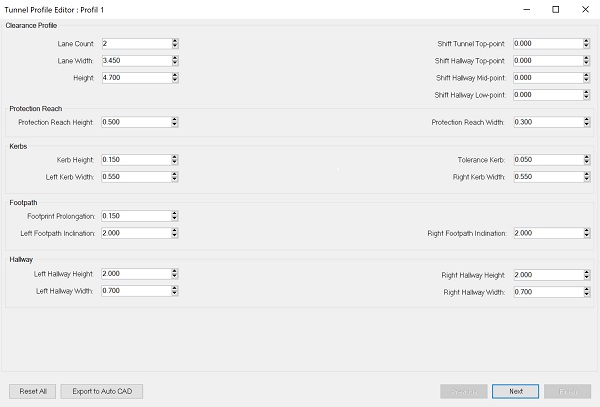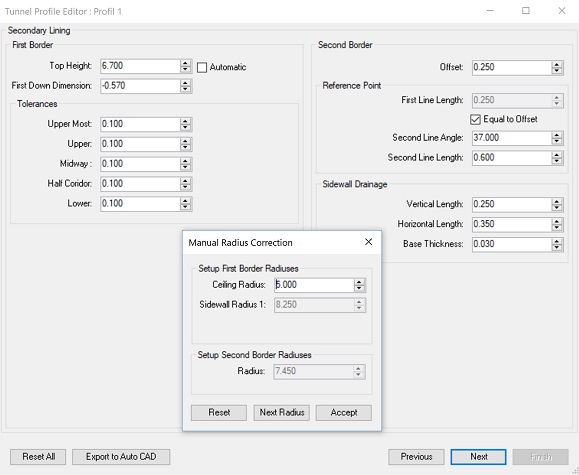Parametric BIM tunnel design

BEXEL Infrastructor is the latest solution from Bexel Consulting’s product portfolio. Its purpose is to modernize the tunnel design and enable full, accurate and proper BIM implementation on tunnel construction projects. Based on parametric BIM tunnel design, the BEXEL Infrastructor allows automatic generation of detailed BIM models - with a high level of associated information elements - making the BIM model ready for numerous 3D/4D/5D BIM analyses.
Infrastructure projects are often linear and tunnel cross section (profile) is complex geometry composed of several analytically defined curves, which presents major challenges for traditional modelling in any BIM software solution. Since change orders in tunnel projects are inevitable (due to variable geological conditions which tend to differ from predicted conditions), frequent BIM model updates are necessary to ensure correct BIM implementation and with difficult modeling process, due to complex geometry, regular model updates are an exceptional problem.
Bexel Consulting identified the problem and has teamed up with experts in the field of tunnel construction to develop BEXEL Infrastructor - a software package that provides parametric BIM tunnel design, resulting in a complex, detailed and information rich BIM model.
All tunnel elements are grouped inside Infrastructor into three main sections: profiles, routes, and tunnels.
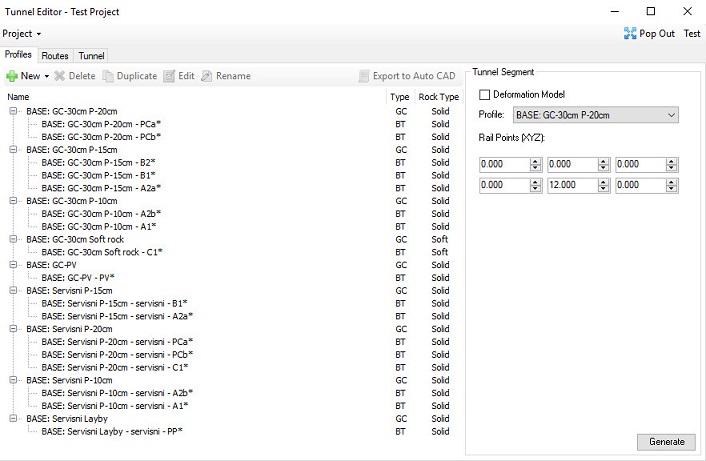
Profiles section contains all tunnel profile types necessary to describe tunnel structure, as well as all necessary components for creation of tunnel profile. Each profile is described by a set of parameters that relate to its geometric and static characteristics. Parameters are divided into several logical sections, in accordance with design process and principles, that user inputs through a series of forms.
Firstly, the basic parameters are defined, such as width and number of lanes, tunnel clear height, kerbs size etc.
The next step is to define dimensions of the primary and secondary linings, parameters of the curves that form the cross-section of the tunnel, and then the parameters for the foundations and the roadway layers.
Finally, in order to get a structurally correct and usable deformed profile, it is necessary to define a parameter for constructive and deformation tolerance, excavation steps, as well as the number and position of the anchors.
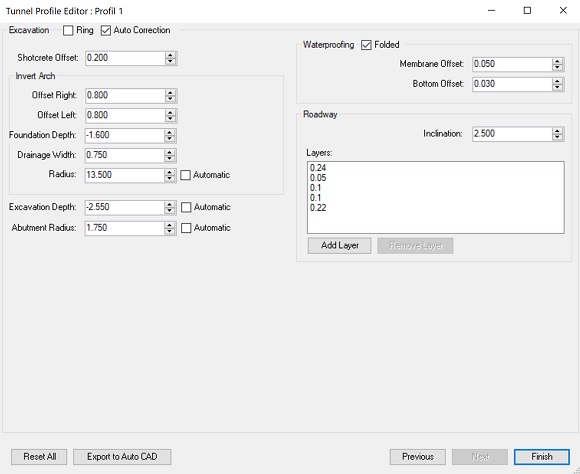
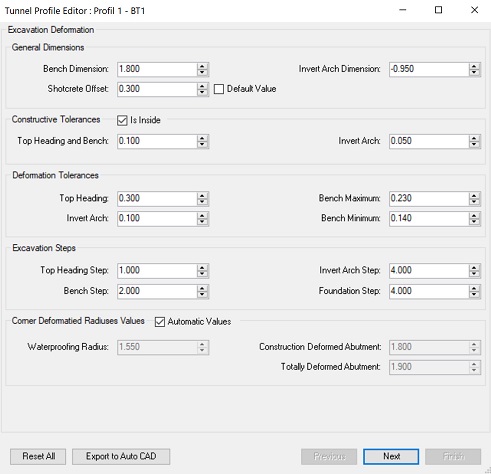
Once all the profiles are generated, it is necessary to load the route (i.e. the central line of the roadway) that consists of a number of curved and circular lines, parabolas and clothoids. The Route is loaded in Bexel Infrastructor as a landXML file, usually generated in Autodesk Civil3D. All tunnel profiles are then arranged along the route, forming a tunnel whose BIM model can be automatically generated.
Previously shown process gives us a possibility to generate the BIM model of the whole tunnel, but also the specific section of the tunnel, which requires significantly less time to generate the model. It is important to note that generating a 100m tunnel section in this way takes just a few minutes, allowing the contractor or design supervisor to quickly modify the BIM model according to changes made during the construction.
In addition to the 3D geometry of the tunnel, BEXEL Infrastructor has the possibility of enriching the model with a wide variety of information in order to get a more functional BIM model. In case the designer concludes that some elements are too complex for modelling, there is a possibility of their description through the parameters that will be attached to some of the existing model elements.
As an example, modelling reinforcement for all concrete elements is hard and time consuming process that usually doesn’t pay off. Instead it can be described through the set of parameters that will carry a description of the type of reinforcement and its quantity. Similarly, it is possible to add other important parameters for handling the BIM model, such as the stationing of the element, soil category, type and position of the niches, etc.
One of the essential functionalities of the BEXEL Infrastructor platform is the ability to automatically generate drawings of profiles and tunnel rings plans in DWG format. Generated drawings are automatically filled with dimension lines and contain necessary spreadsheets in accordance with design standards.
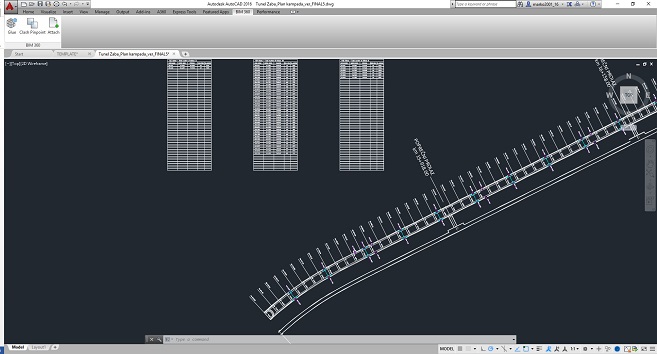
The BIM model generated using BEXEL Infrastructor meets the most important criteria required for the implementation of the 4D/5D BIM process on the project, and the significance of the following criteria will be explained further in the text:
• Model elements have correct quantitative attributes such as length, area, volume;
• Model elements have the correct names or codes, and can be easily classified;
• Elements of the model are with precisely given dimensions in the longitudinal sense (tunnel rings, excavation steps);
• Elements also have proper additional information such as chainage, or soil category for excavation elements.
BEXEL Manager BIM platform is a unique BIM software solution on the market and the only one that fully supports the integrated 3D/4D/5D/6D BIM processes within a single environment.
Fulfilling the first two criteria in the process of BIM design, enables further analyses to be performed fastly and accurately, such as creation of precise quantity takeoffs accompanied by the BIM model visualization, all using the BEXEL Manager. Also, BEXEL Manager has an advanced query system for element attributes, accessible anytime and on any level of the common workflow - starting from the creation of smart element selections (3D), through linking elements to intelligent scheduling and construction methodologies (4D), up to assigning elements with a cost items (5D). Using well defined naming and coding convention for model elements, throughout all stages of modeling process, the BIM model is being properly prepared in order to enable all these functionalities to be accessible and executable for further processes such as auto scheduling and/or budgeting processes (based on precise meta-data) or process of construction monitoring in an integrated BIM environment.
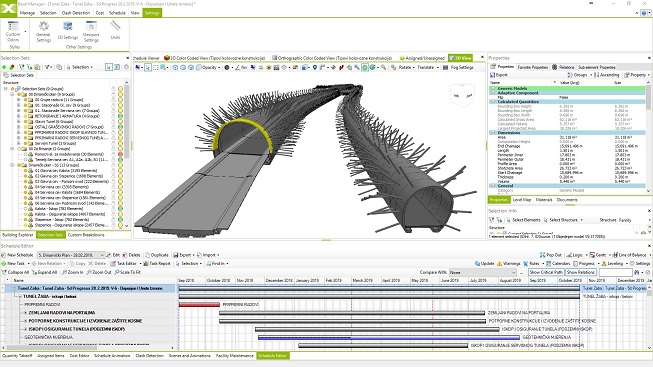
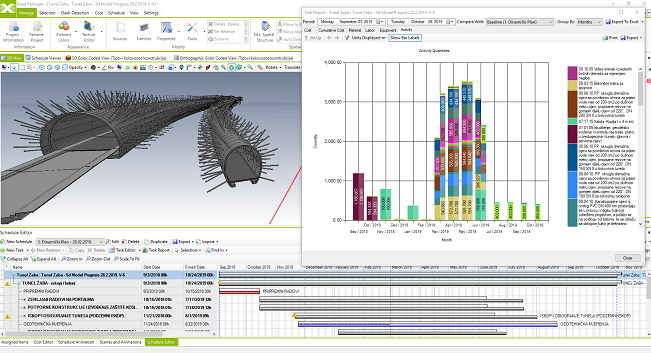
The significance of the longitudinal division of the elements of the BIM model is reflected in the provision of precise planning of the works and the generating of 4D construction simulation according to the realistic steps or tunnel rings, and based on additional data on chainage, it is possible to quickly define the planned construction of follow up tunnel zones. Each additional attribute assigned to the elements of the model within the BEXEL Infrastructor allows for more precise queries in BEXEL Manager and easier connection of the elements with cost items or activities of the construction schedule.
+ Post an article












